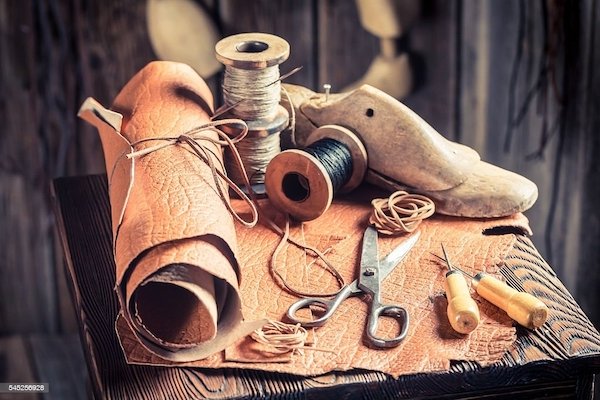
( Image Credit: Source Name / Google Images )
Handmade sandals embody the art of shoemaking, blending tradition, skill, and creativity into wearable masterpieces. From ancient civilizations to the modern era, handmade shoes have graced the feet of nobles, actors, and fashion enthusiasts, leaving an imprint on history and culture.
Each stitch and detail tells a story, reflecting the dedication and passion of the artisans who pour their hearts and soul into creating these exceptional pieces. Handmade sandals offer unparalleled quality, comfort, and individuality, whether it's a pair of meticulously crafted leather boots, intricately woven sandals, or hand-stitched sneakers.
So, join us as we delve into handmade sandals’ rich heritage and timeless allure, where artistry meets style with every step you take.
Notes From Early Humans
Dating back approximately 10,900 years ago, the earliest documented sandal ever discovered is crafted from sagebrush bark and originates from Oregon in the United States. Sandals were also unearthed in ancient Egypt, where individuals of significance exclusively wore them. Egyptian sandals were skillfully crafted using papyrus, leather, and wood. The ancient Greeks and Romans also embraced the use of sandals, with the Greek deity Hermes (Mercury in Roman mythology) frequently depicted sporting winged sandals.

( Image Credit: Source Name / Google Images )
As civilizations emerged, the people of Mesopotamia, Egypt, and Greece embraced the practicality and comfort of sandals. From the sun-baked deserts of Egypt to the bustling city streets of ancient Athens, sandals adorned the feet of both men and women. However, it was not limited to any specific gender or social class; sandals became a common choice for people from all walks of life. Whether they were farmers, merchants, or royalty, the allure of sandals captivated the hearts and soles of humanity throughout history.
History From Ancient Civilizations To Now
Ancient civilizations were the pioneers of handmade sandals. They crafted shoes using animal hides, plant fibers, and even wood. These early shoes were designed for practicality, protection, and adaptation to different terrains. In ancient Egypt, around 1600 BCE, the first evidence of shoes as a status symbol emerged. Handmade sandals adorned with intricate designs and made from luxurious materials were reserved for the elite. Pharaohs and nobles flaunted their wealth and social standing through their footwear.
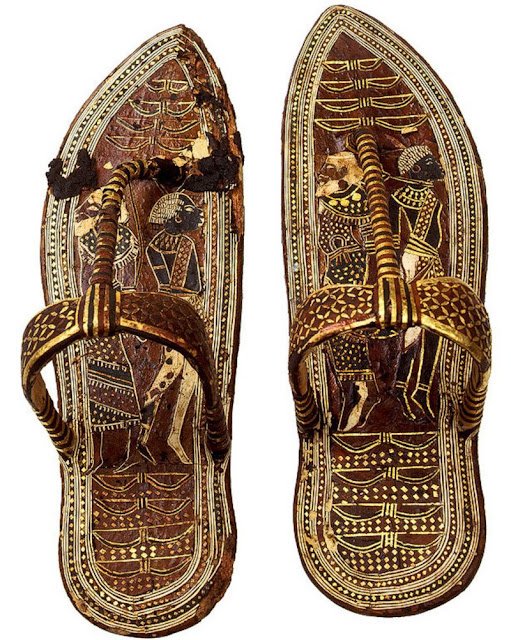
( Image Credit: Source Name / Google Images )
Moving forward to ancient Greece and Rome, the art of shoemaking progressed significantly. Shoemakers, known as cordwainers, honed their skills and specialized in crafting footwear. Sandals, boots, and slippers were tailored to fit the foot's contours, ensuring comfort and style. The Greeks developed the iconic "cothurnus" boots for actors, while the Romans created military sandals with sturdy leather soles and intricate lacing.
The Middle Ages witnessed a surge in shoemaking craftsmanship across Europe. Guilds emerged, establishing standards and preserving the secrets of the trade. Shoemakers crafted bespoke shoes for nobility and the upper class. The pointed poulaine shoes became a fashion statement, with exaggerated lengths symbolizing wealth and status.
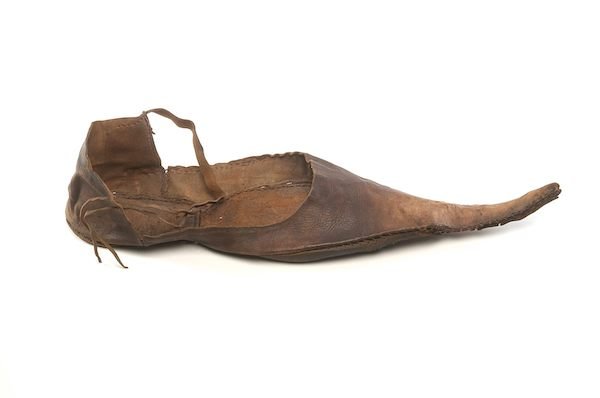
( Image Credit: Source Name / Google Images )
During the Renaissance, shoemakers continued to thrive. Intricate designs, embroidery, and embellishments became popular. The shoes of the time reflected the art and culture of the period, with luxurious materials like velvet, silk, and brocade being used extensively. The Italian Renaissance was especially renowned for its exquisite handmade sandals.
The Industrial Revolution in the 18th century transformed the landscape of shoemaking. Handmade techniques gave way to mechanization, and factories emerged. While machine-made shoes became more common, handmade sandals maintained their allure. Artisans and small-scale shoemakers preserved traditional techniques and catered to those seeking unique, high-quality shoes.
In the 20th century, handmade sandals experienced a revival. Artisans and craftsmen focused on creating bespoke shoes, emphasizing quality, comfort, and individuality. Shoemakers like Salvatore Ferragamo and Manolo Blahnik gained recognition for their exquisite handmade designs, captivating fashion-conscious individuals around the globe.
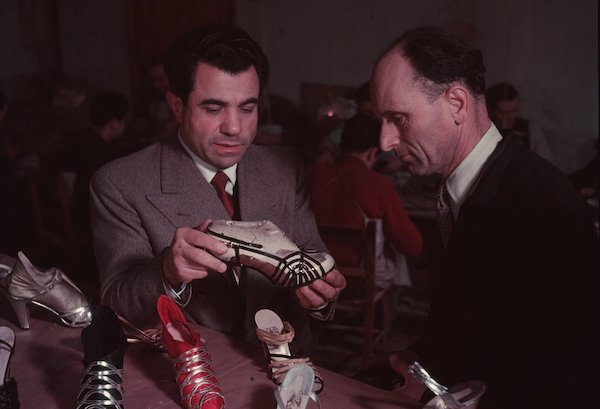
( Image Credit: Source Name / Google Images )
Handmade sandals continue to flourish today, blending traditional craftsmanship with contemporary design. Artisans and independent shoemakers showcase their skills through their creations. From bespoke leather boots to hand-stitched sneakers, handmade sandals are a testament to the enduring appeal of artisanal craftsmanship in a mass-produced world. Handmade sandals offer more than just shoes; it tells a story.
Each stitch represents dedication, skill, and passion. It's a connection to the past, a celebration of heritage, and a commitment to quality. When you wear handmade shoes, you carry a piece of history, bridging the gap between ancient traditions and modern style.
Kosh-a is committed to remaining grounded to its Indian roots and recreating Kolhapuris using non-animal leather. Each pair is handcrafted by artisans in India, using traditional shoe manufacturing methods to make it perfect for everyday wear.
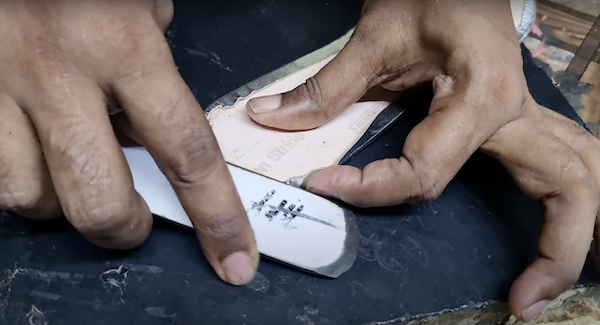
Six Tips to Spot Handmade Sandals
Want to find the crème de la crème of handmade sandals? We've got you covered with some insider tips on how to spot the real deal:
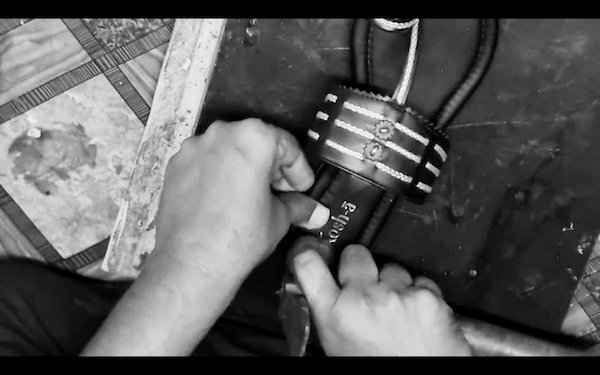
-
The Craftsmanship that Wows:
Take a closer look at those sandals. Quality handmade sandals will make your eyes pop with their meticulous craftsmanship. Check for neat stitching, flawless edges, and consistent patterns. It's all in the details!
-
Material Matters:
The good stuff is key! Genuine leather or durable fabrics are the signs of top-notch quality. Look for materials that feel soft, smooth, and luxurious. Your feet deserve the best!
-
Comfort Fit, Happy Feet:
Happy feet, happy life! Quality handmade sandals prioritize comfort. Seek out cushioned insoles, adjustable straps, and sweet arch support. Your tootsies will thank you!
-
Durability that Endures:
These babies should go the distance! Examine the soles and construction. Sturdy soles securely attached to the upper part of the sandal? Check! Strong, even stitching? You got it! Say no to flimsy flip-flopping!
-
Delightful Details:
Ready for the wow factor? Look for those little extras. Decorative accents and embellishments should be securely attached, making you go "ooh" and "aah." It's the little things that count!
So, the next time you slip on a pair of handmade shoes, take a moment to appreciate the centuries of craftsmanship that have gone into their creation. From ancient civilizations to today, handmade sandals continue to captivate and inspire, leaving an indelible mark on fashion and shoemaking.Additionally, when considering your footwear collection, remember that the distinction between handmade and mass-produced footwear holds a significance of its own. While handmade items often reflect craftsmanship, uniqueness, and a personal touch, while mass-produced products prioritize efficiency and affordability but might lack individuality and attention to detail. Happy Shopping!
FAQs
What is the history of sandals?
Sandals have a long history dating back thousands of years, with evidence of their use in ancient civilizations such as Egypt, Greece, and Rome.
Who invented the sandals?
The exact inventor of sandals is unknown, as they were likely developed independently by different cultures throughout history.
What is the history of the chanclas?
Chanclas, also known as flip-flops, have a history that can be traced back to ancient Egypt, where they were made from papyrus and used by the elite class.
Why were the first sandals invented?
The first sandals were likely invented to protect the feet from rough terrain, hot surfaces, and other environmental hazards, while still allowing for ventilation.
What was the first sandals?
The exact design of the first sandals is unclear, but early examples were likely simple foot coverings made from natural materials such as leaves, grass, or animal skins.
Where did sandals start?
Sandals were first used in various ancient civilizations, including Egypt, Greece, and Rome, as well as in other regions around the world where the climate and terrain called for such footwear.


 Jul 01, 2023
Jul 01, 2023
 Jun 20, 2023
Jun 20, 2023
